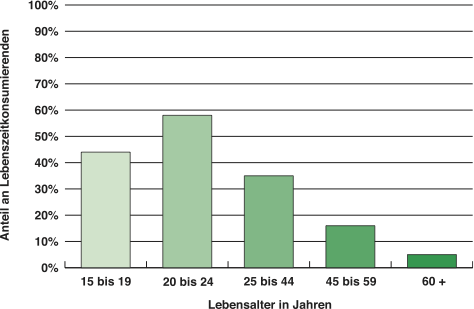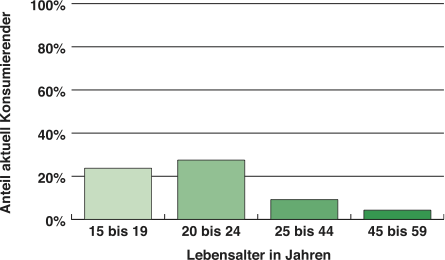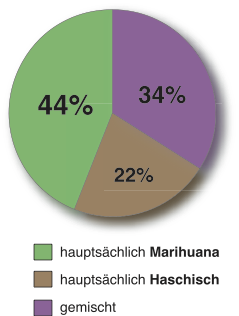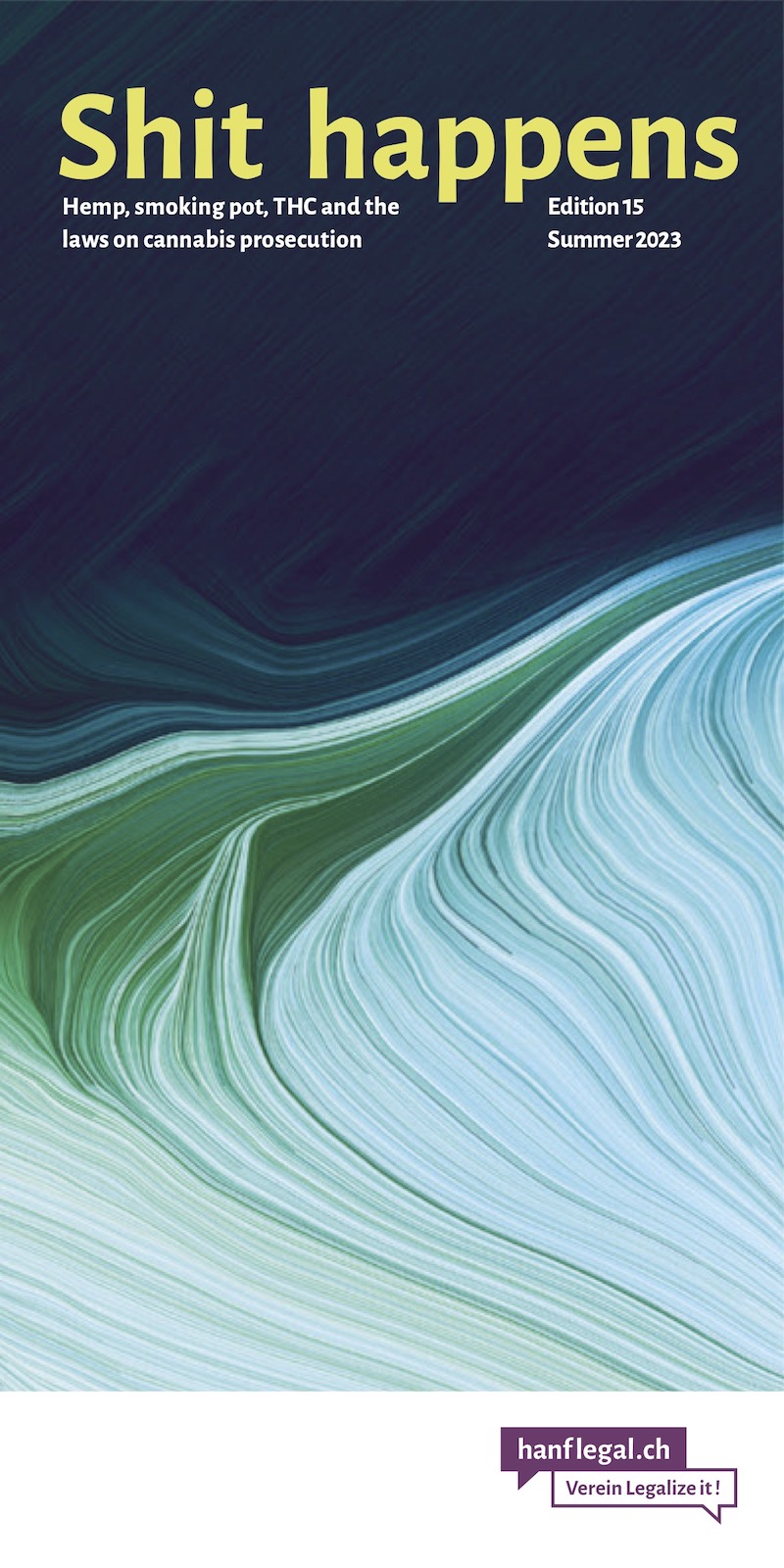- THC & Law:
Cannabis Use in Switzerland - A Study Part 1
In mid-February of this year, the SFA (Swiss Center for Alcohol and Other Drug Problems) published a study looking at weed- and hash consumption in Switzerland. In a telephone survey representative of the whole of Switzerland, 1,600 people were asked about their consumption of and opinion about cannabis products.
Many data
The official title of the study, by the way, is “Cannabis on the threshold to becoming a legal intoxicant - What the Swiss think of cannabis consumption”. Briefly summarized, the study first deals with the question of who has ever smoked pot. Then the researchers were interested in who currently smokes pot, since when and how often; finally, they were also asked what is smoked and how the users get the dried flowers or the pressed resin. These are the core questions about smoking pot. Further questions were then asked about problems with consumption, the utility value of cannabis and the consequences or effects of its use. Also the image of the smokers and the opinion about the current situation were asked. Finally, a whole range of questions was asked about cannabis policy options that are still open at the moment, but which could lead to new legal regulations in a few years' time.
The whole report covers 32 pages and this obviously huge amount of information leads to the fact that the following report is mainly dedicated to the results concerning smokers and their habits.
Who has ever smoked pot?
According to the study, around 27% of 15- to 74-year-old Swiss people have smoked pot at least once in their lives. Among those surveyed, 44% of young people and as many as 58% of young adults had smoked a joint at least once. Another 35% of 25- to 44-year-olds, 16% of 45- to 59-year-olds and as many as 5% of those over 60 have had experience with the use of cannabis.
| Experience with cannabis, by age |
|---|
 |
| Question: “Have you ever used cannabis (marijuana, hashish) in your life?” Basis: 1,584 persons (total sample) |
For the authors of the report, these results are an expression of the fact that the generation of “hash rebels” of the 70s and 80s is now in their fifties and experiences that their offspring let the joint circle. Well, I don't know if this generation really exists as such, because it seems that not everyone in the “wild seventies” was really wild, even if not only the SFA today collectively calls them the generation of “hash rebels”. Even today, this is the easiest thing to recognize: Not everyone smokes pot, and even those who can be classified into this group are so different from each other that this classification can't tell us much. Rather, it is a sign of the times that, in addition to the “fun society” as a whole, there are also subculture-like consumption structures. Whether smoking pot is the alternative to drinking alcohol or using synthetic drugs - I don't think that parents have a big influence on the choice of stimulants for young people, but rather on the way in which they are consumed.
It only remains to add the results of the evaluation by language region. This shows that the higher repressiveness in French-speaking Switzerland is not reflected in a lower proportion of cannabis users - rather the opposite is the case: in French-speaking Switzerland, the proportion of cannabis users is comparable to that in German-speaking Switzerland and significantly higher than in Ticino. As will be shown later, the repression is then rather reflected in the way in which the stimulants come from.
Who smokes pot?
18% of the 15-59 year olds surveyed stated that they had used cannabis products in the last 12 months. In terms of age, this means that just under a quarter of young people and a good quarter of young adults currently use cannabis. Among those aged 25 to 44, the figure is still just under 10%, and among those aged 45 to 59, it is still a good 5%. No smokers over the age of 60 were involved in this study, even though the real situation is certainly different.
| Current use of cannabis, by age |
|---|
 |
| Question: “Do you still use cannabis (marijuana, hashish)?” Basis: 1,365 persons (total sample) |
From the explanatory text it is clear that for the SFA the unique experience with cannabis products exemplifies a norm violation. However, the focus should be on the more important current consumption. Regarding these results, it is stated that although there is significantly more “hash” in young years than in later years, today there can no longer be any question of cannabis use being an exclusive phenomenon of youth.
How often do people who smoke pot smoke?
In the press, the main emphasis was on the figure of 87,000 daily smokers. In the survey, this was 6.5% of adolescents, 5.4% of young adults and 1.7% of 25-44 year olds who said they smoke pot daily. Those over 45 seem to prefer not to smoke pot daily.
Using other numbers, this means that one-third of 15- to 74-year-olds who have cannabis experience still smoke pot today.
What is being stoned?
Be it weed or hash, of domestic or foreign origin - what is consumed, i.e. what might be available where, is not only in the interest of the smokers, but also the law enforcement agencies would like to know what is on the market. In the study, unfortunately, only one question was asked on this topic. Thereby 44% of the stoners stated to consume mainly marijuana. Still 22% consume mainly hashish and 34% smoke weed and hash comparably often.
| Current use of cannabis by preferred substance form |
|---|
 |
| Question: “Do you still use cannabis (marijuana, hashish)?” Basis: 143 persons (current users) |
Already in the past, we have interpreted the extreme increase in marijuana arrests since the mid-1990s - especially among young people - as an indication of a change in the consumption structure: Due to the possibility of purchasing (mostly domestic) weed in stores, many young people never even started to consume (mostly foreign) “alley” hash. But more on the sources of supply of cannabis products in a moment.
Where do you get "it"?
A quarter of the respondents grow hemp themselves and more than half have friends who sometimes give some away. More than a third of the respondents buy something from a hemp store or from friends. Not even one tenth goes “on the street” to get something stoned.
| Procurement of cannabis products |
|---|
 |
| Question: “How do you usually obtain cannabis?” Multiple answers possible Basis: 143 persons (current users) |
As already mentioned in the results on single use, the analysis of the language regions is of particular interest here. Since there are fewer or no stores in French-speaking Switzerland due to the greater repression against smokers, other sources of cannabis should come into play in this part of the country compared to German-speaking Switzerland and Ticino. And really, while in German-speaking Switzerland one fifth and in Ticino even one third buys in stores, in French-speaking Switzerland it is only about one tenth. On the other hand, they are more likely to get it from friends (two thirds, D-CH: 48%, I-CH: 42%). There is also a difference in home cultivation. A quarter of the Italian-speaking respondents grow their own. Among the German-speaking Swiss, it is still a fifth, and in French-speaking Switzerland there are still 13 percent of potential self-suppliers. However, the number of respondents is too small to make general statements about people who smoke pot. But one last detail seems to be appropriate: Especially the 15 to 24 year olds - they have to endure the most reprimands - more often did not give any information about their sources of supply.
In conclusion
I would estimate that 1.5 to 2 million inhabitants of our small hemp country have already taken a drag on a joint. Of these, about 500,000 are likely to be current users, perhaps half of them weekly or more often. Finally, there are about 100'000 almost daily users - so within the smokers again a minority …
If someone consumes cannabis on a daily basis, the SFA classifies this consumption as “problematic” - just because of the “daily”. Without further information about the person and the environment, I find this conclusion daring and arrogant towards responsible users. But it is not surprising that a specialized agency dealing with drug problems should take this view. In a further report on this study, it should be clarified whether the approximately 100,000 more or less daily smokers see this consumption as a problem or rather as a pleasure.
Source: “Cannabis on the threshold of legal intoxication: a representative study on the phenomenon “Cannabis” : consumption, attitudes, politics” by Richard Müller, Hermann Fahrenkrug, Sandra Müller. SFA, Swiss Center for Alcohol and Other Drug Problems, 2001. (books.google.ch - PDF)
Support our work with a donation:
Bank transfer
Account number (IBAN):
CH02 0900 0000 8709 1354 3
Full account details
Or scan this QR code with your eBanking App (ZKB, Revolut, Postfinance, …):

Or open/share the QR code as PDF file with your eBanking App.
Credit card
Donate via credit card
Verein Legalize it!
Quellenstrasse 25
8005 Zürich
Threema ID 7NH65RBY
Don’t miss anything! Follow us on social media:

